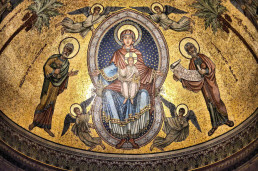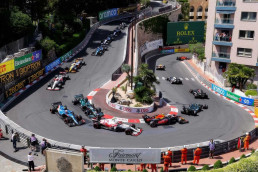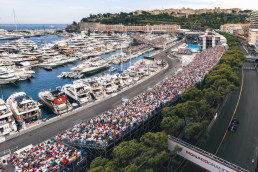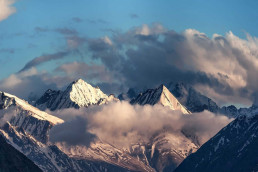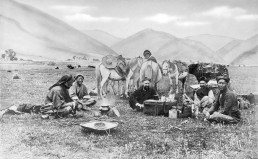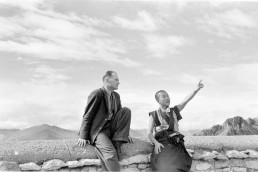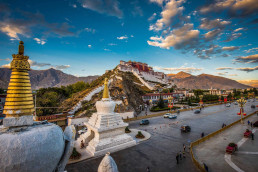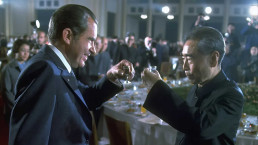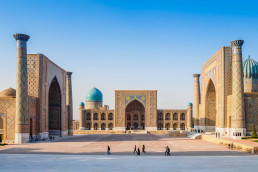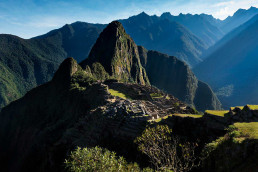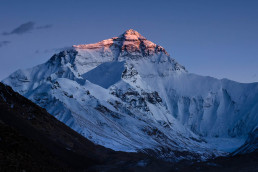Monaco Grand Prix - A Playground for Princes And Petrolheads
Monaco, a pocket-sized principality perched on the dazzling Côte d’Azur, exudes a vitality unlike any other. This sovereign state, steeped in ancient history and brimming with modern extravagance, becomes a pilgrimage spot for petrolheads every May, when the Monaco Grand Prix lights up its famed streets.
The sound of Formula One engines reverberates through the heart of Monte Carlo, the legendary track that winds around the wealthy harbour and past the stately Hotel de Paris. Witnessing the sight is like stepping into a golden age of motorsport, when renowned drivers like Juan Manuel Fangio and Graham Hill competed for dominance inches away from opulent yachts.
Monaco’s history dates back centuries. The Grimaldi dynasty, known for their cunning and persistence, secured the little state’s independence in 1297. Perched on a towering cliff overlooking the Mediterranean, the Prince’s Palace, a gloomy fortification transformed into a beautiful palace, is a powerful symbol of their long reign.
The fascination of Monaco stretches well beyond the racecourse. The mediaeval splendour of Monaco-Ville, the old town located atop The Rock, provides an insight into the principality’s history. Cobbled alleyways lead past the centuries-old Saint Nicholas Cathedral, a spectacular example of Romanesque architecture, while the Oceanographic Museum, created by Prince Albert I in 1910, displays the wonders of the deep sea with a collection that would make Jacques Cousteau happy.
But Monaco is also a playground for the wealthy and famous. The renowned Casino de Monte Carlo, immortalised in literature and film, entices high rollers with its sumptuous gaming halls and rich history. The streets are lined with luxury boutiques, making it a dream destination for anyone looking for designer brands and unique experiences. However, beyond the facade of affluence is a thriving local culture. The Monegasque people, with their distinct speech and traditions, have a strong feeling of identity. Wander around the Condamine district, Monaco’s centre, and you’ll find bustling cafes and colourful marketplaces that provide a glimpse into daily life in this fascinating principality.
The Monaco Grand Prix is more than just a race. It’s all about taking in the atmosphere, which combines adrenaline-pumping excitement, heart-stopping glamour, and a rich historical context. Imagine a scene with sleek yachts bobbing in the harbour, their shiny surfaces reflecting the vivid colours of team flags. Spectators in designer dress mingle with die-hard fans wearing team colours, and the air is thick with expectation as the legendary tunnel spits out the snarling animals of Formula One.
The sensory overload continues as the engines howl, creating a mechanical symphony that emphasises the enormous skill and daring required to navigate the treacherous circuit. Every turn conquered, every chicane mastered, adds to the drama, demonstrating the drivers’ unshakable attention and the cutting-edge technology of their vehicles.
Beyond the show, there’s an opportunity to rub elbows with greatness. The glittering world of Formula One descends on Monaco, with celebrities, team members, and renowned drivers contributing to the electrifying atmosphere. You might find yourself sipping champagne with a former Formula One winner or catching a sight of your favourite driver walking across the paddock.
The Monaco Grand Prix is more than just a race; it’s an experience to remember. It’s an opportunity to experience the allure of history, luxury, and high-octane activity that distinguishes this one-of-a-kind corner of the world. So, purchase your tickets, reserve your seat on the iconic circuit, and prepare to be swept away by the charm of Monaco.
Lost in the Himalayas: The Epic History of Tibetan Exploration
The enormous, windswept plateau of Tibet, nestled in the Himalayas, has long captivated travellers with its aura of mystery. Known as the “Roof of the World,” this region boasts a deep spiritual heritage in addition to breathtaking natural scenery. However, entering this remote region has always proven to be a challenge. Why does this fabled location still motivate contemporary explorers? Let’s investigate the past of Tibetan missions to find out.
European explorers and geographers were captivated by tales of a hidden Buddhist kingdom in the Himalayas that began to circulate during the Middle Ages. In the 13th century, the desire to explore this enigmatic place firsthand was spurred by Marco Polo’s fanciful stories. Details of these early expeditions are few, however it is believed that the Franciscan missionary Odoric of Pordenone set foot in Tibet in the fourteenth century, making him the first European to do so.
The “Great Game,” a political struggle for dominance of Central Asia, had engulfed European countries by the nineteenth century, with Russia and Britain at the forefront. This sparked a fresh round of missions, and daring explorers like Sven Hedin painstakingly charted the treacherous Tibetan landscape. There was more at play than just a general interest in geography, though. For instance, the contentious military conquest of Lhasa, the capital of Tibet, by the British Younghusband Expedition in 1904 was the culmination of their efforts to build trade routes and oppose Russian influence.
The scientific research of Tibet was vital, notwithstanding the political intrigues of certain expeditions. Trailblazing individuals such as the extraordinary Alexandra David-Néel, who lived as a Tibetan man, recorded the rare and exotic wildlife of the area. Following his dramatic escape from an Indian prisoner-of-war camp, Heinrich Harrer, author of the best-selling book “Seven Years in Tibet,” became an unusual resident. Harrer became quite close to the young Dalai Lama, the spiritual head of Tibetan Buddhism, during his extraordinary seven-year stay. His writings served as a window into Tibetan life for Westerners and contributed to the Dalai Lama’s education, among other purposes. Along with others, these explorers enhanced our scientific knowledge of the area and fostered a greater respect for Tibetan customs and culture.
There is no denying Tibet’s spiritual importance. It has been a hub for Tibetan Buddhism, a subset of Mahayana Buddhism that permeates Tibetan culture and daily life, for millennia. Perceval Landon and other early explorers recorded the centrality of monasteries to Tibetan life and the elaborate religious rites that took place there. Tourists can now experience these traditions, such as the hypnotic chanting of monks and the vibrant prayer wheels that line pilgrimage paths, through responsible travel.
Tibet is majestically framed by the Himalayas, the crown gem of the Earth. People looking for adventure, like mountaineers and trekkers, have long been drawn to this. The path for subsequent expeditions was laid by pioneering climbers like as George Mallory, who unfortunately died on Mount Everest in 1924. Treks to Everest Base Camp or throughout western Tibet’s expansive wilderness provide unmatched chances to encounter the untamed magnificence and strenuous physicality of the “Roof of the World.”
A spiritual leader of Tibetan Buddhism and the fourteenth lama in a lineage thought to be reincarnations of the bodhisattva Avalokiteshvara, Heinrich Harrer’s experiences brought him to the attention of the world. The Dalai Lama took up his position at an early age, and his connection with Harrer offered him invaluable guidance and company during this formative time. As a worldwide symbol of nonviolent resistance and peace, the Dalai Lama went into exile after China invaded Tibet in 1950. In 1989, he received the Nobel Peace Prize for his work in supporting Tibet and spreading the concept of global responsibility.
Even if Tibet’s political climate has changed drastically, there are still plenty of reasons to visit this fascinating country. at the Himalayas, mountaineers and trekkers can experience unmatched beauty, and at Tibetan Buddhist monasteries, a rich spiritual history can be seen. But contemporary exploration goes beyond just travelling. By travelling in an ethical manner, tourists are able to engage with locals, gain insight into their culture, and understand the challenge of maintaining traditions while adjusting to a changing world.
There are threats to Tibet’s distinctive culture and ecology. The fragile ecosystems of the Himalayas are under danger from climate change, and traditional ways of life are being transformed by fast urbanisation. To preserve Tibet’s grandeur for centuries to come, responsible tourism is essential. The enchantment of this remarkable site may be preserved if tourists help local communities, reduce their environmental effect, and honour cultural traditions.
The Liquid Gold of China’s Cultural Heritage
Few spirits can compare to Maotai in terms of reputation and cultural significance. Maotai is a style of jiangxiang baijiu that originated in the village of Maotai, Guizhou Province, China. It is a clear and colourless liquor that has become a symbol of tradition, elegance, and cultural pride.
Maotai is created with few components, including sorghum, a wheat-based qū, and water from the Chishui River. It uses traditional Chinese fermentation, distillation, and ageing procedures to create a spirit with a distinct nutty, grain-forward, and savoury scent and flavour.The careful production process, which includes many fermentation and distillation phases, can take up to a year, demonstrating a commitment to craftsmanship.
Maotai’s history spans over a thousand years, with its legendary reputation reinforced during the Qing Dynasty. It received international recognition in 1915 at the Panama-Pacific International Exposition, where it was given a gold medal.Since then, Maotai has become a vital element of Chinese culture, frequently employed at official ceremonies and state banquets.
Maotai’s prestige stems from more than simply its distinct taste and production technique.It also concerns perception and historical relevance.Maotai was a favourite drink of Mao Zedong, the founding father of the People’s Republic of China, and was famously offered during state meals.Such effusive endorsements made Maotai the brand of choice for the elite, a must-have at business banquets, and a display of riches.
A variety of factors contribute to Maotai’s high pricing.Its reputation as a luxury spirit stems from its limited production and exquisite crafting.Furthermore, it is regarded a prestige symbol due to its high price and limited supply. This is part of Maotai’s marketing and sales strategy, which has helped it become not only the most valuable spirits brand in China, but also in the globe.
In conclusion, Maotai is more than a spirit. It is a symbol of Chinese cultural heritage, reflecting the country’s rich history and traditions. Despite its exorbitant price, it is nevertheless valued and appreciated, not just for its distinct flavour, but also for the cultural significance it represents. Maotai, whether served at official banquets or given as a dignified memento, is a liquid embodiment of Chinese cultural pride.
Fasting Frenzy: The Places with the Most Extreme Ramadan Fasts
As the holy month of Ramadan enters the Islamic calendar, Muslims around the world start on a spiritual journey of fasting from dusk til dawn. This ritual, known as ‘Sawm,’ is one of Islam’s Five Pillars and is deeply revered. However, the length of fasting varies widely across the globe due to regional variances, resulting in some remarkable extremes.
Fasting periods in the world’s far north, such as Greenland and Iceland, can last up to 17 hours. This is owing to the tilt of the Earth and the sun’s position, which causes longer daylight hours during the summer months. In extreme northern locations such as Longyearbyen in Norway, where the sun does not set from April 20 to August 22, religious judgments have been made requiring Muslims to fast according to the fasting times of Mecca, Saudi Arabia, or the next Muslim country.
In contrast, Muslims in the world’s southernmost countries, such as New Zealand, Chile, and Argentina, fast for approximately 12 hours. This is owing to the decreased daylight hours observed in certain regions during Ramadan.
Fasting times are inextricably related to the lunar Hijri calendar, which is dependent on the moon’s phases. This calendar is made up of 29 or 30-day months, making it 11 days shorter than the solar year. As a result, Ramadan starts 10 to 12 days earlier every year. This shifting cycle means that Ramadan will be observed twice in 2030.
Fasting begins approximately eight hours after the last meal. The fast comprises abstaining from eating, drinking, smoking, and sexual intercourse during daylight hours in order to increase “taqwa,” or God-consciousness. Suhoor is the pre-dawn meal to begin the daily fast, and breaking one’s fast after sunset is called Iftar.
The practice of fasting during Ramadan demonstrates the great diversity and adaptation of Islamic traditions around the globe. Whether it’s a quick 12-hour fast in the southern hemisphere or a long 17-hour fast in the north, the spirit of Ramadan brings Muslims all around the world together in a shared experience of faith, patience, and endurance.
As we wonder at the geographical extremes of fasting, we are reminded of the universal ideals that Ramadan represents: empathy, self-discipline, and a sense of community. Regardless of the length of the day, the essence of Ramadan stays constant, brightening the lives of millions of people worldwide.
Immersed in Heritage of Bhaktapur's Enchanting Past
Nestled in the Kathmandu Valley of Nepal lies a hidden gem of ancient allure and cultural richness – Bhaktapur. As I wandered through its labyrinthine streets, I felt transported back in time, immersed in a world where tradition and history intertwine seamlessly. In this National Geographic-style narrative, I invite you to embark on a journey with me through the enchanting city of Bhaktapur.
A Tapestry of Time
Stepping into Bhaktapur is like entering a living museum, where every corner tells a story of centuries past. The city’s origins can be traced back to the 9th century, when it was established as a kingdom of its own. Over the centuries, Bhaktapur flourished as a center of art, architecture, and trade, attracting artisans and craftsmen from far and wide. The ancient streets, lined with intricately carved buildings and bustling marketplaces, offer a glimpse into the rich tapestry of Nepal’s cultural heritage.
Strolling Through Durbar Square
My first stop in Bhaktapur was the iconic Durbar Square, a UNESCO World Heritage Site and the heart of the city. As I walked through the square, I was captivated by the intricate carvings adorning the temples and palaces that surrounded me. Each structure seemed to whisper tales of dynasties long gone, of kings and queens who once ruled these lands. From the majestic Nyatapola Temple to the intricately carved Palace of Fifty-Five Windows, Durbar Square is a testament to the architectural prowess of the Newar artisans who crafted these masterpieces centuries ago.
The Art of Pottery
One of Bhaktapur’s most famous traditions is its pottery-making, a craft that has been passed down through generations. I visited the Pottery Square, where I watched in awe as skilled artisans molded clay into beautiful works of art, using techniques that have remained unchanged for centuries. The air was filled with the rhythmic tapping of hands against clay, a symphony of craftsmanship that echoed through the narrow streets. From traditional water pots to ornate vases, the pottery of Bhaktapur is a testament to the skill and ingenuity of its artisans.
A Taste of Tradition
No visit to Bhaktapur would be complete without sampling its culinary delights. I indulged in local delicacies such as bara, a savory lentil pancake, and juju dhau, a creamy yogurt that is said to have been enjoyed by royalty in ancient times. Each bite was a revelation, a fusion of flavors that spoke to the city’s rich culinary heritage. From street food stalls to family-run eateries, Bhaktapur offers a culinary adventure like no other, where every meal is a celebration of tradition and flavor.
The Living Goddess
As I wandered through the streets of Bhaktapur, I had the rare opportunity to catch a glimpse of the living goddess, Kumari. Chosen from a young age, Kumari is worshipped as the embodiment of divine feminine energy. I watched in awe as she was carried through the streets in a palanquin, her serene presence casting a spell over all who beheld her. The tradition of the living goddess is just one of the many ancient rituals that continue to thrive in Bhaktapur, a testament to the city’s deep spiritual heritage.
Preserving the Past
While Bhaktapur is a city steeped in history, it is also a place where tradition meets modernity. As I explored its streets, I was struck by the juxtaposition of ancient temples and bustling markets with modern cafes and shops. Yet, amidst the rapid pace of change, there is a concerted effort to preserve Bhaktapur’s cultural heritage, ensuring that future generations will be able to experience its timeless beauty. From restoration projects to cultural preservation initiatives, the people of Bhaktapur are dedicated to safeguarding their heritage for generations to come.
A Journey of Discovery
My time in Bhaktapur was a journey of discovery, a voyage through a world where the past and present collide in a kaleidoscope of sights, sounds, and sensations. As I bid farewell to this enchanting city, I carried with me memories that will last a lifetime – memories of a place where time stands still, and history comes alive at every turn. In the tapestry of Nepal’s cultural landscape, Bhaktapur shines like a precious gem, a testament to the enduring spirit of a civilization that has stood the test of time. And as I reflect on my travels, I am filled with a sense of gratitude for having had the opportunity to experience its wonders firsthand. Bhaktapur is more than just a destination – it is a journey into the heart and soul of Nepal, a place where the past and present converge in a timeless dance of beauty and grace.
Exploring the Mysteries and Wonders of Machu Picchu
As I stood atop the ancient ruins of Machu Picchu, nestled amidst the rugged peaks of the Andes Mountains, I couldn’t help but feel a sense of awe and wonder enveloping me. It was as if I had been transported back in time, to an era where ancient civilizations thrived, and where the secrets of the past still whispered through the stone walls, echoing the stories of those who once called this place home.
My journey to Machu Picchu began long before I set foot on the ancient Inca Trail. It started with a deep-seated fascination for history, archaeology, and the mysteries of lost civilizations that seemed to call out to me from the pages of books and the depths of documentaries. For years, I had dreamed of visiting this legendary site, often referred to as the “Lost City of the Incas,” and finally, my dream was about to become a reality.
As I embarked on the challenging trek along the Inca Trail, winding through lush rainforests, across rushing rivers, and up steep mountain passes, I couldn’t help but marvel at the ingenuity and resilience of the ancient Incas. Built in the 15th century at the height of the Inca Empire, Machu Picchu was a remarkable feat of engineering and architecture, a testament to the skill and vision of its creators. Each step I took along the trail felt like a journey through time, with every stone and every bend in the path revealing fragments of a bygone era.
Arriving at Machu Picchu at dawn, as the first rays of sunlight illuminated the ancient citadel, was a moment I will never forget. The mist hung low over the mountains, adding to the sense of mystery and magic that permeated the air. Walking through the stone terraces, temples, and palaces, I felt a deep connection to the past, as if the spirits of the ancient Incas were guiding my steps through the corridors of time.
One of the most striking features of Machu Picchu is its sheer scale and complexity. Covering an area of over 80,000 acres, the site contains more than 150 buildings, ranging from temples and palaces to homes and agricultural terraces. The precision with which these structures were built, using only simple tools and manual labor, is truly mind-boggling, a testament to the advanced engineering knowledge and meticulous craftsmanship of the Inca people.
As I explored the various parts of Machu Picchu, each corner revealed new wonders and surprises, unveiling the rich tapestry of Inca culture and history. The Intihuatana stone, an intricately carved ceremonial altar believed to have been used for astronomical observations and rituals, stood as a silent sentinel overlooking the valley below, its enigmatic presence hinting at the spiritual beliefs and practices of the ancient Incas. The Temple of the Sun, with its flawless stonework and commanding views, offered a glimpse into the religious practices and celestial worship that were central to Inca society.
But perhaps the most awe-inspiring moment of my journey came when I reached the iconic Sun Gate, known as Inti Punku in Quechua, the language of the Incas. Perched high on a ridge overlooking Machu Picchu, the Sun Gate served as the main entrance to the citadel and provided a breathtaking panorama of the surrounding landscape. As I stood there, gazing out at the majestic peaks and valleys bathed in the golden light of the rising sun, I couldn’t help but feel a profound sense of gratitude for the opportunity to witness such natural and man-made beauty in harmony.
Of course, no visit to Machu Picchu would be complete without experiencing the vibrant culture and traditions of the Andean people, whose rich heritage is deeply intertwined with the ancient Inca civilization. From the bustling markets of Cusco, where vibrant textiles and intricate handicrafts beckon to passersby, to the traditional villages nestled in the mountains, where time seems to stand still amid the rugged beauty of the landscape, the region is alive with the spirit of the Andean people. Sampling local cuisine, learning about traditional weaving techniques passed down through generations, and participating in ancient rituals that honor the earth and the spirits of the mountains were just a few of the highlights of my journey, offering me a deeper understanding and appreciation of the living legacy of the Inca civilization.
As I reluctantly bid farewell to Machu Picchu and began the journey back to civilization, I knew that the memories of my time at this sacred site would stay with me forever, etched into the very fabric of my being. It’s not just the breathtaking beauty or the awe-inspiring architecture that makes Machu Picchu so special; it’s the sense of wonder and discovery that permeates every corner of this ancient citadel, inviting travelers to embark on a journey of exploration and introspection that transcends the boundaries of time and space. And for those fortunate enough to make the journey, it’s an experience that will leave a lasting imprint on their hearts and minds, inspiring them to seek out new adventures and embrace the wonders of the world around them with open arms and an open heart.
Unveiling the Mystical Land of Tibet
Nestled amidst the towering peaks of the Himalayas lies a land shrouded in mystique and spiritual reverence – Tibet. As travelers venture into this remote corner of the world, they embark on a journey through time, tracing the footsteps of ancient pilgrims and nomadic tribes who have called this rugged terrain home for millennia. From the sacred monasteries of Lhasa to the pristine lakes of the Tibetan plateau, each step unveils a tapestry of history and culture woven with threads of devotion and resilience.
The Spiritual Heart of Tibet
At the heart of Tibet lies Lhasa, the capital city and spiritual center of the region. Here, amidst the bustling streets and ancient alleyways of the Barkhor, pilgrims from across the Tibetan plateau gather to pay homage to the sacred Jokhang Temple. Dating back over a thousand years, this revered sanctuary stands as a testament to the enduring faith of the Tibetan people, its golden spires gleaming in the sunlight as prayers echo through its hallowed halls. Surrounding the Jokhang Temple is the majestic Potala Palace, once the winter residence of the Dalai Lama. Its towering white walls and golden roofs rise above the city, a symbol of Tibetan Buddhism’s spiritual and political significance.
Journey to the Roof of the World
As travelers venture beyond the confines of Lhasa, they are greeted by a landscape of breathtaking beauty and raw wilderness. The Tibetan plateau stretches out before them, its vast expanse punctuated by snow-capped peaks, pristine lakes, and sweeping grasslands. Along ancient trade routes and remote mountain passes, nomadic herders tend to their flocks of yaks, preserving a way of life that has remained unchanged for centuries. Along the route, travelers may encounter the sacred Mount Kailash, revered by Buddhists, Hindus, Jains, and Bonpos alike as the center of the universe and a source of spiritual energy.
Sacred Sites and Hidden Treasures
Throughout Tibet, travelers encounter a wealth of sacred sites and hidden treasures, each imbued with its own unique significance. From the majestic Potala Palace, former residence of the Dalai Lamas, to the remote caves of Drak Yerpa, where ancient meditation chambers still echo with the chants of long-departed monks, every corner of the land holds secrets waiting to be uncovered. The monastic complex of Ganden, perched high in the Himalayas, offers stunning views of the surrounding mountains and serves as a spiritual retreat for monks and pilgrims seeking enlightenment.
Cultural Encounters and Timeless Traditions
But beyond its natural beauty and spiritual landmarks, Tibet is also a land of vibrant culture and timeless traditions. Travelers have the opportunity to immerse themselves in the rich tapestry of Tibetan life, from colorful festivals and traditional dance performances to encounters with local artisans and craftsmen. Whether sampling hearty Tibetan cuisine or participating in a traditional butter sculpture workshop, every experience offers a glimpse into the soul of this ancient land. Tibetan festivals such as Losar (Tibetan New Year), Saga Dawa (celebrating Buddha’s birth, enlightenment, and death), and Shoton (Yogurt Festival) provide insight into the region’s cultural heritage and spiritual practices.
Preserving the Past, Embracing the Future
As Tibet continues to evolve in the modern world, there is a delicate balance between preserving its rich cultural heritage and embracing the forces of change. Yet amidst the challenges of globalization and political unrest, the spirit of Tibet remains resilient, its people drawing strength from their deep-rooted traditions and unwavering faith. For travelers who journey to this mystical land, the experience is not merely a visit to a distant destination but a pilgrimage to the soul of the Himalayas, where the past meets the present in a timeless embrace.
A Journey of Discovery
In the mystical land of Tibet, every moment is a journey of discovery – a chance to unravel the mysteries of the past and embrace the wonders of the present. From the sacred monasteries of Lhasa to the rugged beauty of the Tibetan plateau, each step brings travelers closer to the heart of this ancient land and the timeless spirit that calls it home. As they wander through the storied streets and hidden valleys of Tibet, they are reminded that the true beauty of travel lies not only in the destinations we visit but in the connections we forge along the way.
A Spiritual Trek to Everest Base Camp in Tibet
Nestled in the cradle of the Himalayas, the journey to Everest Base Camp in Tibet is not merely a physical odyssey but a spiritual pilgrimage to the roof of the world. As the thin air whispers tales of ancient mountaineers and mystical sages, travelers embark on a trek that transcends earthly boundaries, weaving through rugged terrain and sacred valleys in search of enlightenment and adventure.
Setting foot in Lhasa, the capital city of Tibet, one cannot help but feel the palpable sense of spirituality that permeates the air. With its majestic monasteries and prayer flags fluttering in the breeze, Lhasa serves as the gateway to a realm where the physical and the metaphysical converge. Here, amidst the crimson-robed monks and the timeless rituals of Tibetan Buddhism, one finds solace in the simplicity of devotion and the boundless expanse of the sky.
As the journey unfolds, travelers traverse the windswept plains of the Tibetan plateau, where yaks graze leisurely against a backdrop of snow-capped peaks. With every step, the landscape transforms, revealing hidden valleys adorned with alpine flowers and glacial lakes shimmering like jewels in the sunlight. Along the ancient trade routes that once connected empires, nomadic herders welcome weary travelers with warm smiles and cups of butter tea, embodying the spirit of hospitality that defines Tibetan culture.
Ascending into the rarified air of the Himalayas, the trail to Everest Base Camp becomes a test of endurance and resilience. With each arduous climb and treacherous pass, travelers confront their own limitations and embrace the raw beauty of the wilderness that surrounds them. Yet amidst the physical challenges, there is a profound sense of peace that settles over the soul, as the majesty of the mountains humbles the spirit and ignites a sense of wonder.
Reaching Everest Base Camp, the culmination of weeks of trekking and soul-searching, travelers are greeted by a sight that defies description. Towering above them like a silent sentinel, Mount Everest commands respect and reverence, its snow-clad summit piercing the heavens. Here, amidst the icy winds and the ethereal glow of sunrise, one cannot help but feel a sense of awe at the sheer magnitude of nature’s power and the insignificance of human endeavor.
But beyond the physical grandeur of Everest lies a deeper, more profound truth—that in the shadow of the world’s highest peak, one finds not only the summit of a mountain but the summit of the soul. For in the quiet moments of reflection and meditation, amidst the ancient monasteries and sacred stupas that dot the landscape, travelers discover a sense of peace and harmony that transcends the boundaries of language and culture.
As the sun sets on another day in the Himalayas, casting its golden glow upon the towering peaks and verdant valleys below, travelers are left with a sense of gratitude for the journey that has brought them here. In the footsteps of pilgrims and adventurers who have come before, they have witnessed the beauty of the natural world and the resilience of the human spirit, finding solace and inspiration in the timeless wisdom of the mountains.
For those who embark on a spiritual trek to Everest Base Camp in Tibet, the journey is not just a physical challenge but a transformative experience—a pilgrimage of the soul that leaves an indelible mark on the heart and mind. In the shadow of the world’s highest peak, amidst the whispers of the wind and the silent majesty of the mountains, travelers find a sense of purpose and meaning that transcends the boundaries of time and space—a reminder that in the pursuit of adventure and enlightenment, the journey is as important as the destination.
From Lhasa’s bustling Barkhor Square to the serene beauty of Rongbuk Monastery, the trek to Everest Base Camp is punctuated by encounters with both the sacred and the sublime. Along the way, travelers immerse themselves in the rich tapestry of Tibetan culture, learning from local guides and monks about the ancient traditions and spiritual practices that have sustained this land for centuries.
In the shadow of Mount Everest, travelers pause to reflect on the fragility of life and the impermanence of existence, finding solace in the knowledge that amidst the chaos of the world, there are still places of beauty and serenity where one can find peace and perspective. As they gaze upon the snow-capped peaks and vast expanses of wilderness that stretch out before them, travelers are reminded of the interconnectedness of all things and the importance of living in harmony with nature.
As they make their way back down the mountain, travelers carry with them not only memories of breathtaking vistas and physical challenges overcome but a newfound sense of purpose and clarity. In the quiet moments of contemplation that follow, they vow to live each day with intention and gratitude, cherishing the beauty of the natural world and honoring the wisdom of those who have come before.
For those who embark on a spiritual trek to Everest Base Camp in Tibet, the journey is more than just a physical adventure—it is a transformative experience that touches the soul and leaves an indelible mark on the heart. In the shadow of the world’s highest peak, amidst the whispers of the wind and the silent majesty of the mountains, travelers find a sense of purpose and meaning that transcends the boundaries of time and space—a reminder that the journey is as important as the destination, and that the true summit lies within.





